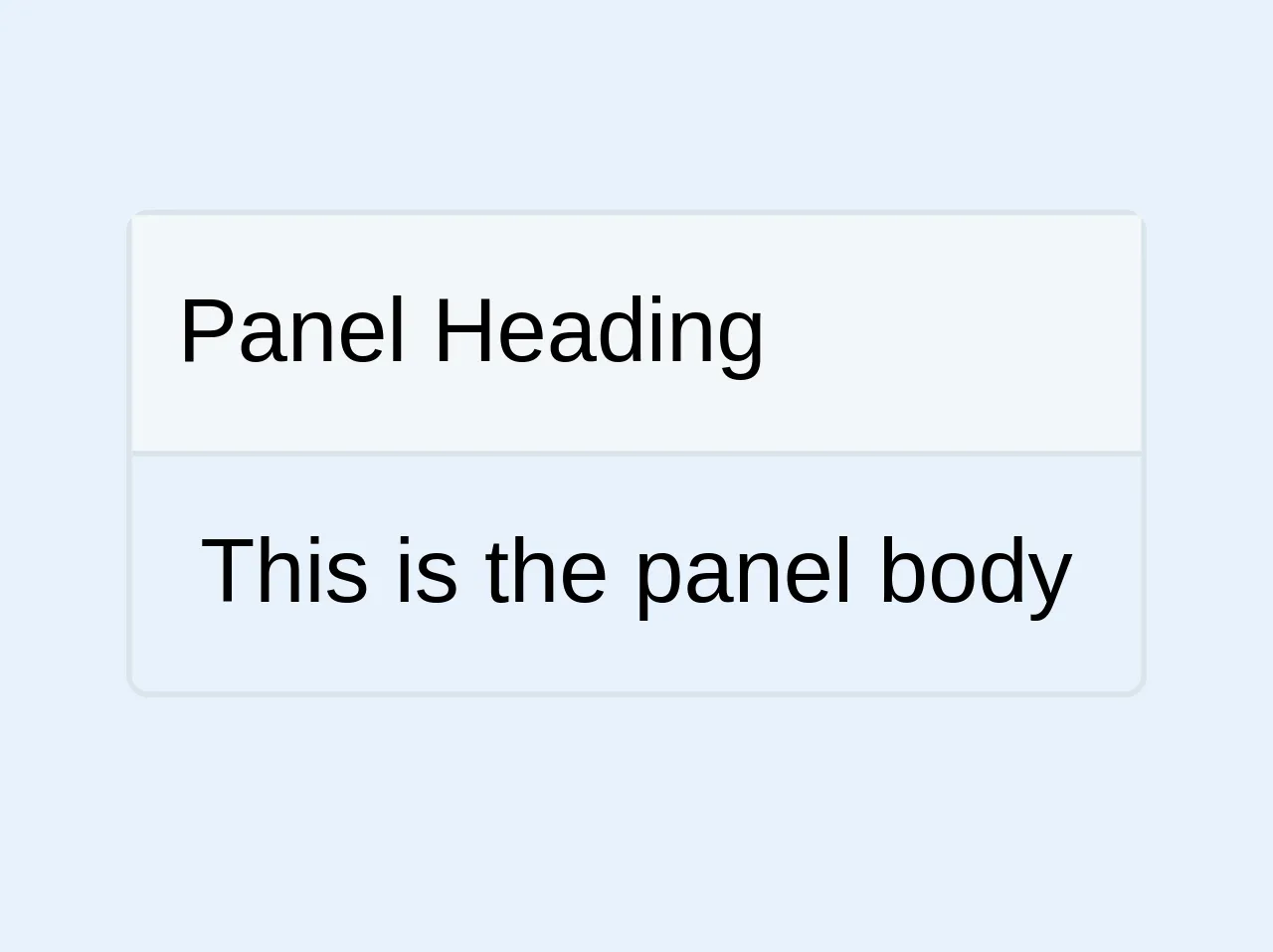- Published on
Ultimate Guide: Make A Bootstrap Style Panel With Tailwind CSS

- What is Tailwind CSS?
- The description of Bootstrap style panel ui component
- Why use Tailwind CSS to create a Bootstrap style panel ui component?
- The preview of Bootstrap style panel ui component.
- The source code of Bootstrap style panel ui component.
- How to create a Bootstrap style panel with Tailwind CSS?
- Conclusion
What is Tailwind CSS?
Tailwind CSS is a utility-first CSS framework that provides a set of pre-defined classes to help developers quickly build custom user interfaces. It is designed to be highly customizable and allows developers to create complex designs without writing custom CSS.
The description of Bootstrap style panel ui component
Bootstrap is a popular front-end framework that provides a set of pre-built UI components, including panels. Panels are a type of container that can be used to group related content. They can be used to display information, forms, or other types of content.
Why use Tailwind CSS to create a Bootstrap style panel ui component?
While Bootstrap provides a set of pre-built UI components, it can be challenging to customize them to fit your specific needs. Tailwind CSS, on the other hand, provides a set of utility classes that can be used to create custom designs quickly. By using Tailwind CSS to create a Bootstrap style panel, you can take advantage of the pre-built UI components while still having the flexibility to customize the design to fit your specific needs.
The preview of Bootstrap style panel ui component.
To create a Bootstrap style panel with Tailwind CSS, we will use a combination of pre-built classes and custom CSS. The resulting panel will have a header, body, and footer, with a border around the entire panel.
Free download of the Bootstrap style panel's source code
The source code of Bootstrap style panel ui component.
To create a Bootstrap style panel with Tailwind CSS, we will use a combination of pre-built classes and custom CSS. The resulting panel will have a header, body, and footer, with a border around the entire panel.
<div class="mb-2 border-solid border-grey-light rounded border shadow-sm">
<div class="bg-grey-lighter px-2 py-3 border-solid border-grey-light border-b">
Panel Heading
</div>
<div class="p-3">
This is the panel body
</div>
</div>
How to create a Bootstrap style panel with Tailwind CSS?
To create a Bootstrap style panel with Tailwind CSS, follow these steps:
- Create a new HTML file and add the following code:
<div class="panel">
<div class="panel-header">
<h3 class="panel-title">Panel Title</h3>
</div>
<div class="panel-body">
Panel Content
</div>
<div class="panel-footer">
Panel Footer
</div>
</div>
- Add the following CSS to your stylesheet:
.panel {
border: 1px solid #ddd;
border-radius: 4px;
}
.panel-header {
padding: 10px;
border-bottom: 1px solid #ddd;
}
.panel-title {
margin: 0;
}
.panel-body {
padding: 10px;
}
.panel-footer {
padding: 10px;
border-top: 1px solid #ddd;
}
- Add the necessary Tailwind CSS classes to your HTML:
<div class="panel border rounded">
<div class="panel-header bg-gray-200 py-2 px-4 border-b">
<h3 class="panel-title font-bold text-lg">Panel Title</h3>
</div>
<div class="panel-body p-4">
Panel Content
</div>
<div class="panel-footer bg-gray-200 py-2 px-4 border-t">
Panel Footer
</div>
</div>
- Customize the design as needed by adjusting the CSS classes or adding custom CSS.
Conclusion
In this article, we have discussed how to create a Bootstrap style panel with Tailwind CSS. By using Tailwind CSS, we can take advantage of the pre-built UI components while still having the flexibility to customize the design to fit our specific needs. With the steps outlined in this article, you should now be able to create your own Bootstrap style panels with Tailwind CSS.